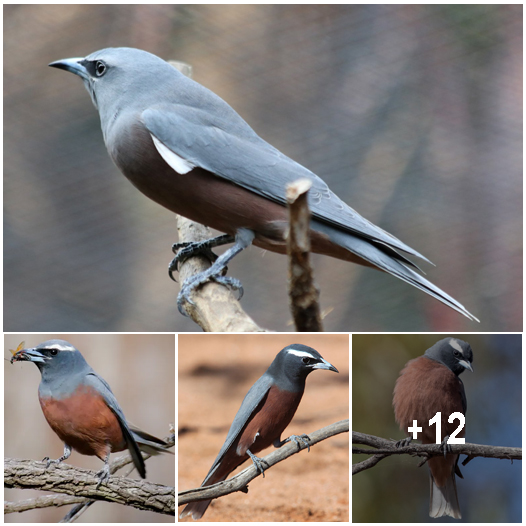Bird photography is one of the most popular genres of nature photography. This should come as no surprise since birding is one of the world’s most popular pastimes. Birds have nature of flying and spent lifetime of moments enjoying them for what they are; harbingers of song and flight, beauty and grace.
1 / 19
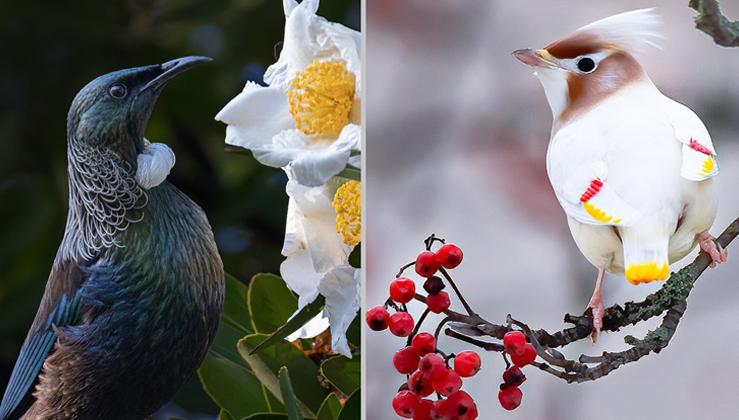
Bird Photography is a difficult job , requiring specialized skills and equipment. It does not means simply pick up a camera used capturing photos. Best photographer captures compelling avian images. This list composed most beautiful birds photography done by professional photographers. Here are Most Beautiful Birds in the World.
2 / 19
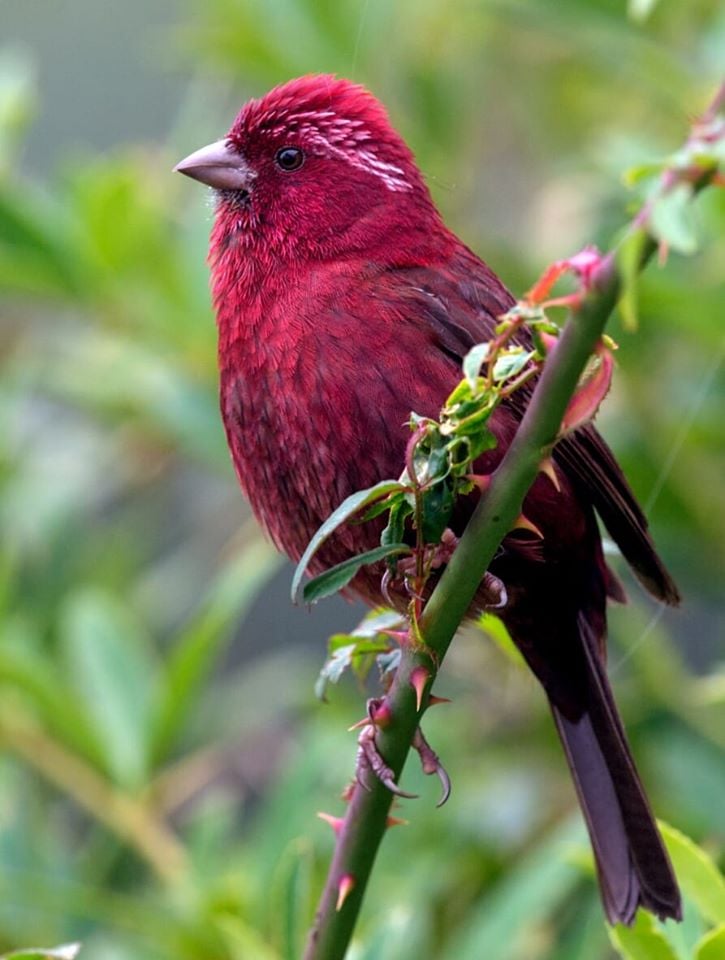
Taiwan Rosefinch (Carpodacus formosanus): The Taiwan rosefinch (Carpodacus formosanus) is a species of finch in the family Fringillidae. It was formerly considered a subspecies of the vinaceous rosefinch. It is endemic to Taiwan. Its natural habitats are temperate forests and subtropical or tropical dry forests.
3 / 19

Greater Bluebonnet (Northiella haematogaster): The Eastern Bluebonnet (also known as Greater Bluebonnet) – Northiella haematogaster (Gould, 1838) – is a small parrot from Australia. It was previously classified as Psephotus haematogaster but in 1994 it was moved to the Northiella genus. A breeding pair will form a very strong bond for life. They are common among breeders in Europe but less common in USA. They are usually seen in pairs or small groups of up to 20 birds. Image credit: Deepak Karra
4 / 19

Speckled Tanager (Ixothraupis guttata): The speckled tanager (Ixothraupis guttata) is a medium-sized passerine bird. It is a resident breeder in Costa Rica, Panama, Trinidad, Venezuela, Colombia, Guyana, Suriname and the extreme north of Brazil. There are also sight records from French Guiana. Adult speckled tanagers are 13.2 cm (5.2 in) long and weigh 18 g (0.63 oz). The upperparts are green with black spotting, and the face is yellow with a black line from the eye to the gape. The wings and tail are black edged with green, and the underparts are white spotted with black. The sexes are similar. The speckled tanager’s flight call is a weak metallic chirping tsip.
5 / 19
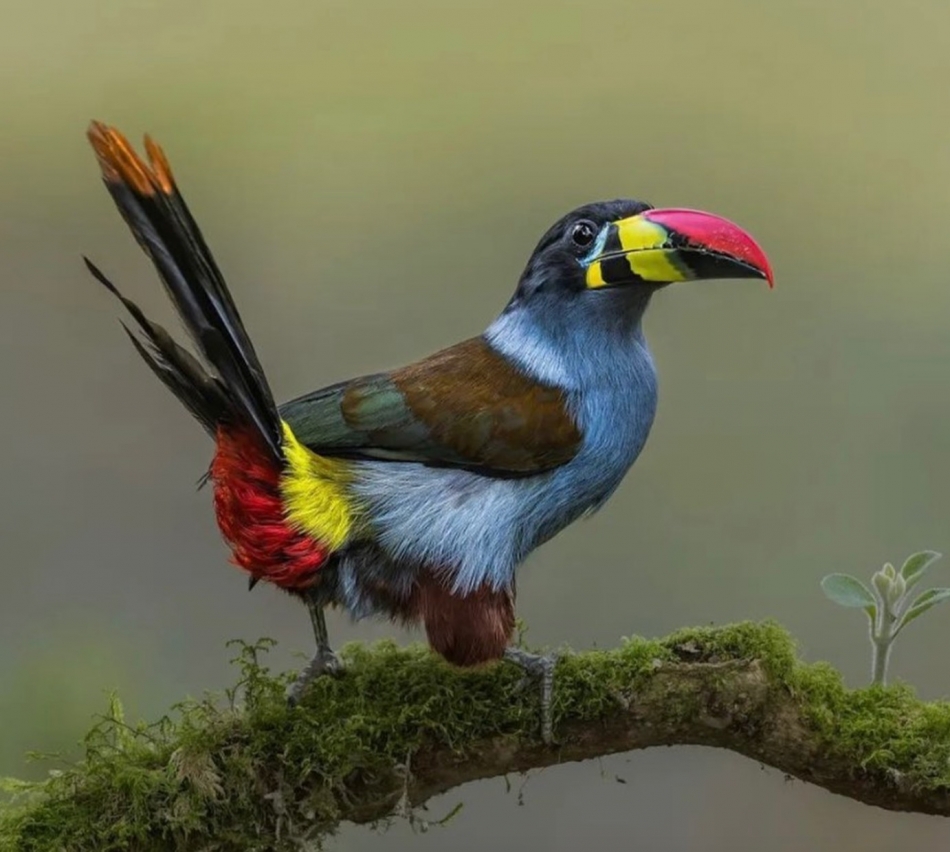
Grey-breasted Mountain-toucan (Andigena hypoglauca): The grey-breasted mountain toucan (Andigena hypoglauca) is a species of bird in the family Ramphastidae found in humid highland forest, often at the tops of the trees, in the Andes of southern Colombia, Ecuador and Peru. It remains locally fairly common, but has declined due to habitat loss. A wide variety of fruits and berries are eaten and this species is often more willing than most largish toucans to leave the canopy to eat raspberries near the base of the trees. They tend to remain quiet while flying and are known to mix often with other birds while foraging, including larger species of tanagers, thrushes and icterids, both behavior unusual in toucans. Very little is known about the life history details for this species. Image credit: Jainy Maria
6 / 19

Pink-throated Twinspot: The Pink throated Twinspot is also an endemic resident to the Southern Africa region, occurring only from Southern Mozambique through Eastern Eswatini, down to the Northern Kwazulu-Natal coastline. The Pink throated Twinspot is easily identified by its pink face, throat, breast and rump. It has a brown crown and back. Other than the Green Twinspot it favours dry tropical and sub-tropical thickets, dense woodland and forest edges. Females have a more greyish tone to their head and throat. The Green Twinspot is a small and shy forest specie found in the eastern parts of Southern Africa where it spends its time in moist forests, as well as woodland and coastal scrub in winter. Its insect-like call, green upperparts and, in the case of the male, its red face, separate it from the Pink throated Twinspot.
7 / 19

Red-legged Honeycreeper (Cyanerpes cyaneus): his species is found from southern Mexico to central Brazil and Bolivia. There is also a disjunct population in the Atlantic rainforest of south-eastern Brazil. These birds are 12-13 cm long and weigh 14 g. The red-legged honeycreeper is found along the edges of rainforests and swamp forests, in open dry woodlands and savannas, second growths, rural areas and plantations. They occur from sea level up to an altitude of 1.200 m. The female builds a cup-shaped nest made of spider webs, placed in a fork in a tree. There she lays 2-3 white eggs with brown blotches, which she incubates alone for 12-13 days. The chicks are fed by both parents and fledge 14 days after hatching. Each pair can raise 2-3 broods per year. IUCN status – LC (Least Concern) Image credit: Jeffrey Munoz
8 / 19

Leucistic Bohemian Waxwing (Bombycilla garrulous): This is a Bohemian waxwing with a mutation known as leucism, which causes partial loss of pigment (unlike albinism which is total loss). Bohemian Waxwing (Bombycilla garrulus) is a vagrant bird in India. Size: 18 cm. Although the Bohemian Waxwing occurs in the northern part of Czechoslovakia (Bohemia), it is actually so named for its wandering nature. In tame and gregarious flocks, Bohemian Waxwings inhabit open, coniferous-deciduous forests. As is typical for a waxwing, this species feeds heavily on fruit during all times of the year, though insects compose the bulk of the diet during warm months. Image credit: Arsi Ikonen
9 / 19
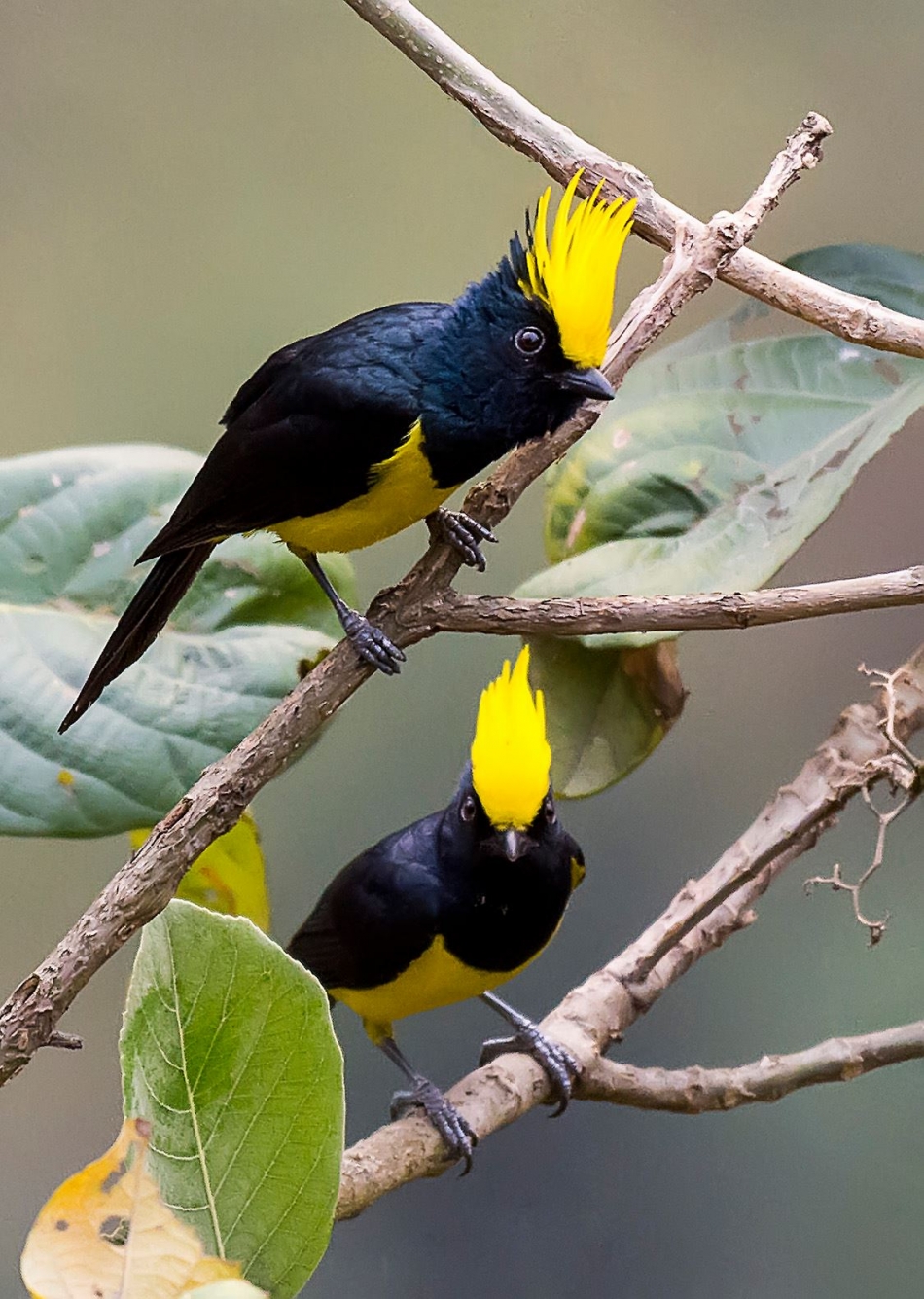
Sultan Tit (Melanochlora sultanea): The sultan tit (Melanochlora sultanea) is an Asian forest bird with a yellow crest, dark bill, black upperparts plumage and yellow underparts. The sexes are similar. The female has greenish-black upperparts and a yellowish throat. The young bird is duller than the adult and has a shorter crest. It is the only member of the monotypic genus Melanochlora, which is fairly distinct from the Parus tits with the nearest relative being the monotypic Sylviparus. Widely distributed within suitable habitats throughout its large range, the Sultan Tit is evaluated as Least Concern on the IUCN Red List of Threatened Species. Image credit: Papan Nandi
10 / 19
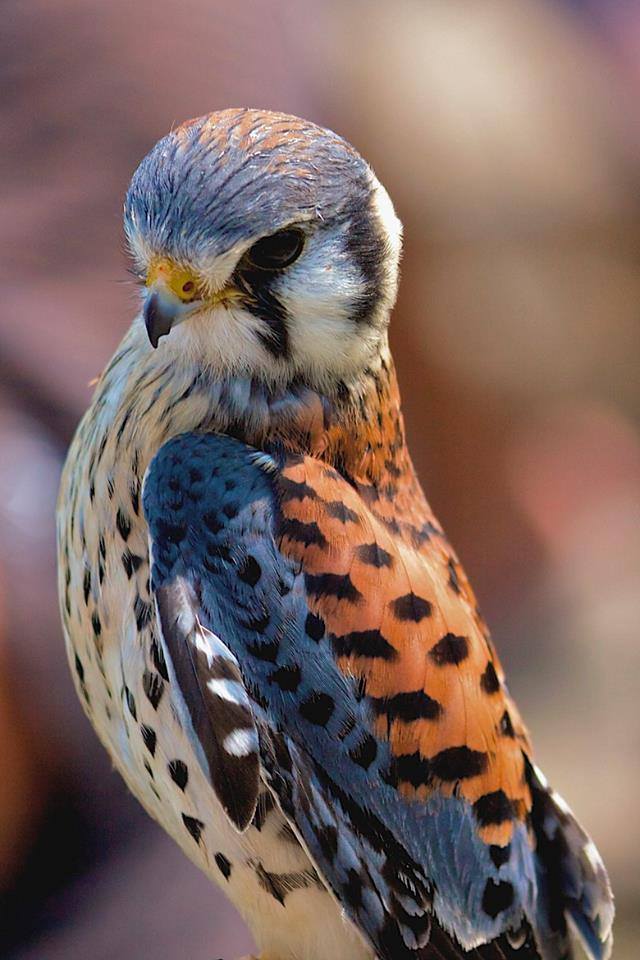
American Kestrel (Falco sparverius): The American Kestrel (Falco sparverius) is the smallest and most common falcon in North America. The female is slightly larger and is all rufous on the back and wings. The male has blue-gray wings. Both sexes have double black stripes on a white face. Kestrels are sometimes called Sparrow Hawks or killy hawks. Kestrels are cavity nesters but cannot excavate their own nests. They prefer natural tree cavities, old woodpecker holes, rock crevices, and nooks in buildings. They readily take to nest boxes. Kestrel nest sites are along wood edges or in the middle of an open area. he American Kestrel is designated a Species of Greatest Conservation Need in the 2015 Maryland State Wildlife Action Plan. By providing nest boxes in appropriate habitat, Maryland landowners in agricultural communities can play an important role in the future of this small falcon.
Image credit: Murray MacLeod.
11 / 19
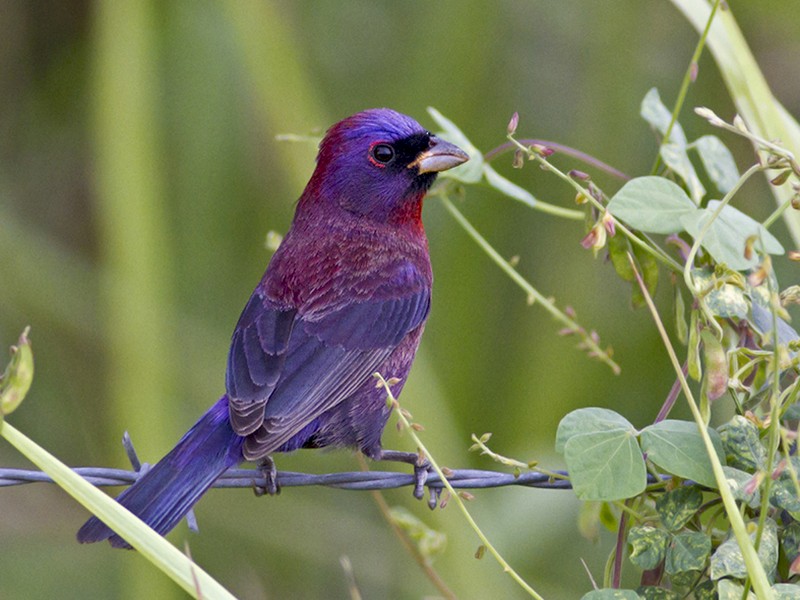
Varied Bunting (Passerina versicolor): A varied bunting (Passerina genus) is a small songbird that belongs to the Passeriformes order of the cardinal bird family. They usually prefer thorny and dense habitats. These birds are not shy in nature and can be seen in their range abundantly. These beautiful birds do not like populated areas. They are gorgeous and unique in their appearance. They are widely seen across Texas in the United States and can especially be called the birds of North America. Buntings’ song is loud enough to be heard from a distance. They have some special characteristics that will make you more curious. This bird species can be found flying from near sea level to almost 4000 ft (1220 m) elevation. Wish to know more about it? Here are some fun, engaging, and interesting facts on varied bunting birds.
12 / 19
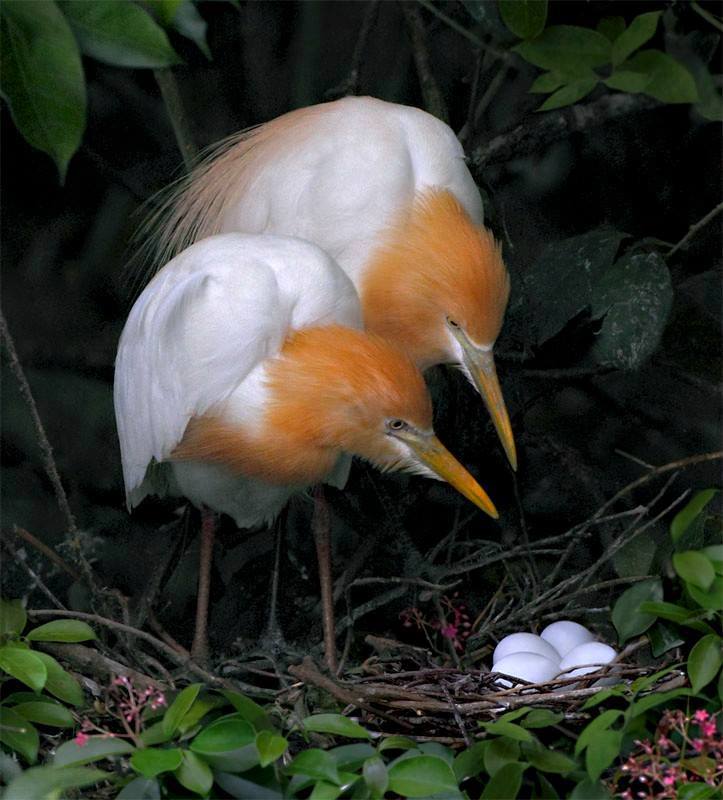
Cattle Egrets (Bubulcus ibis): The Cattle Egret (Bubulcus ibis) is a cosmopolitan species of heron (family Ardeidae) found in the tropics, subtropics and warm temperate zones. It is the only member of the monotypic genus Bubulcus, although some authorities regard its two subspecies as full species, the Western Cattle Egret and the Eastern Cattle Egret. Despite the similarities in plumage to the egrets of the genus Egretta, it is more closely related to the herons of Ardea. Originally native to parts of Asia, Africa and Europe, it has undergone a rapid expansion in its distribution and successfully colonised much of the rest of the world.
13 / 19
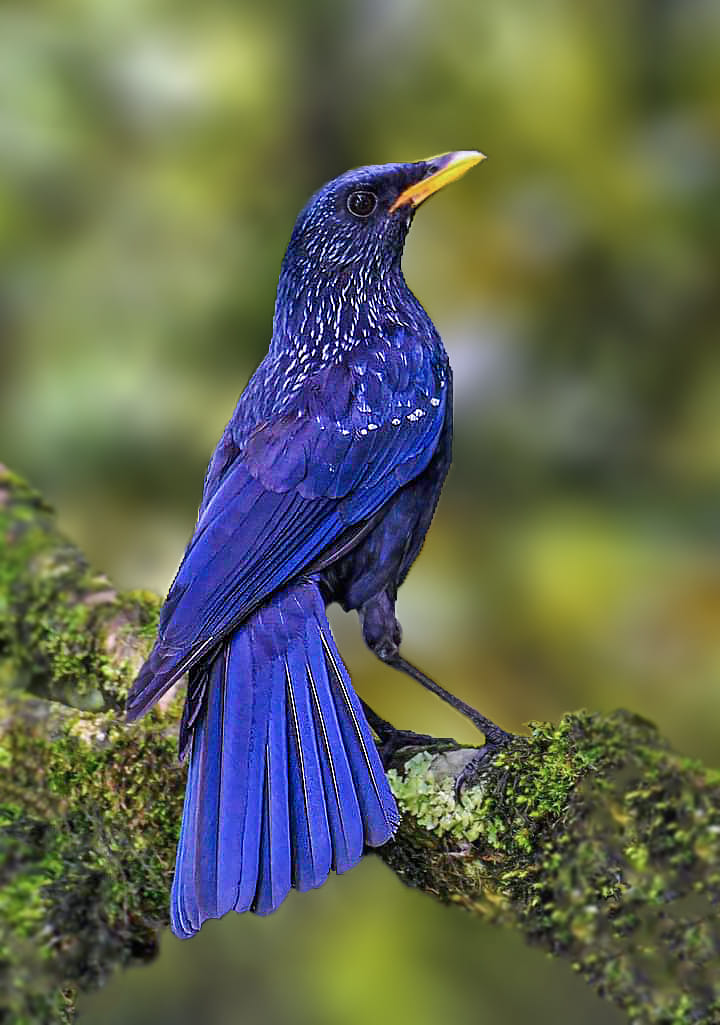
Blue Whistling Thrush (Myophonus caeruleus): The Blue Whistling Thrush (Myophonus caeruleus) is a whistling thrush present in the mountains of Central Asia, China and Southeast Asia. It is known for its loud human-like whistling song at dawn and dusk. The widely distributed populations show variations in size and plumage with several of them considered as subspecies. Like others in the genus, they feed on the ground, often along streams and in damp places foraging for snails, crabs, fruits and insects.
14 / 19
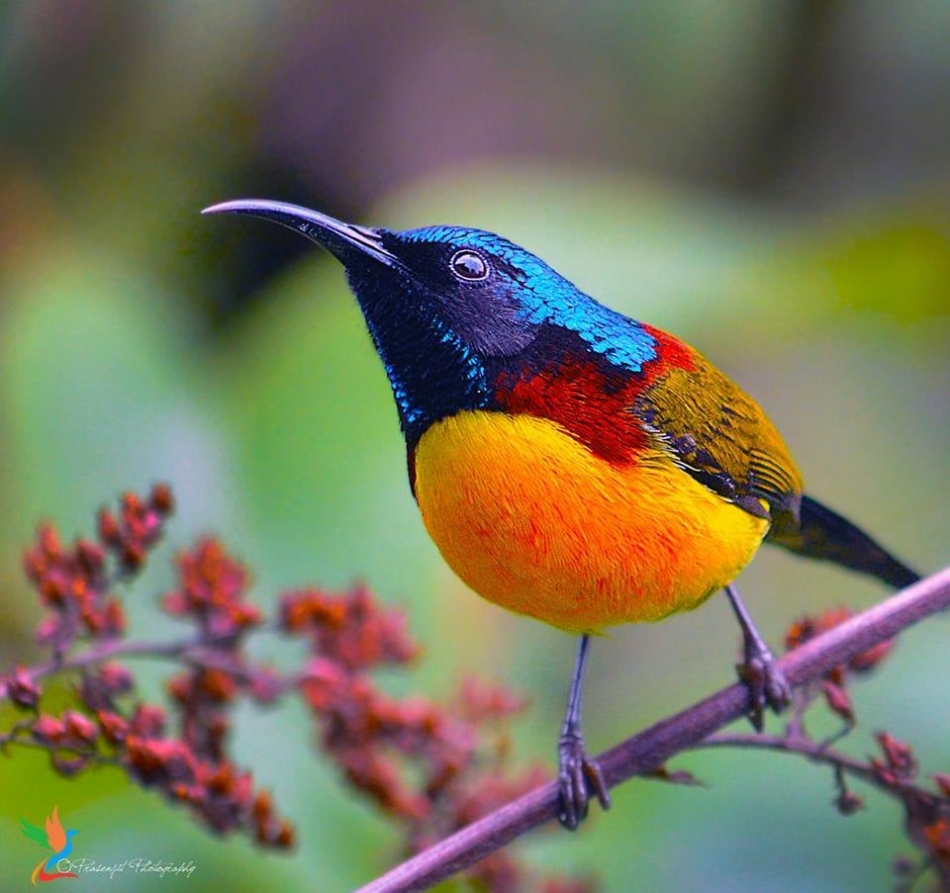
Green-tailed Sunbird (Aethopyga nipalensis): The green-tailed sunbird or Nepal yellow-backed sunbird is a species of bird in the family Nectariniidae. This species has a very large range, and hence does not approach the thresholds for Vulnerable under the range size criterion (Extent of Occurrence 30% decline over ten years or three generations). The population size has not been quantified, but it is not believed to approach the thresholds for Vulnerable under the population size criterion (10% in ten years or three generations, or with a specified population structure). For these reasons the species is evaluated as Least Concern.
Image credit: Prasenjit Dutta
15 / 19
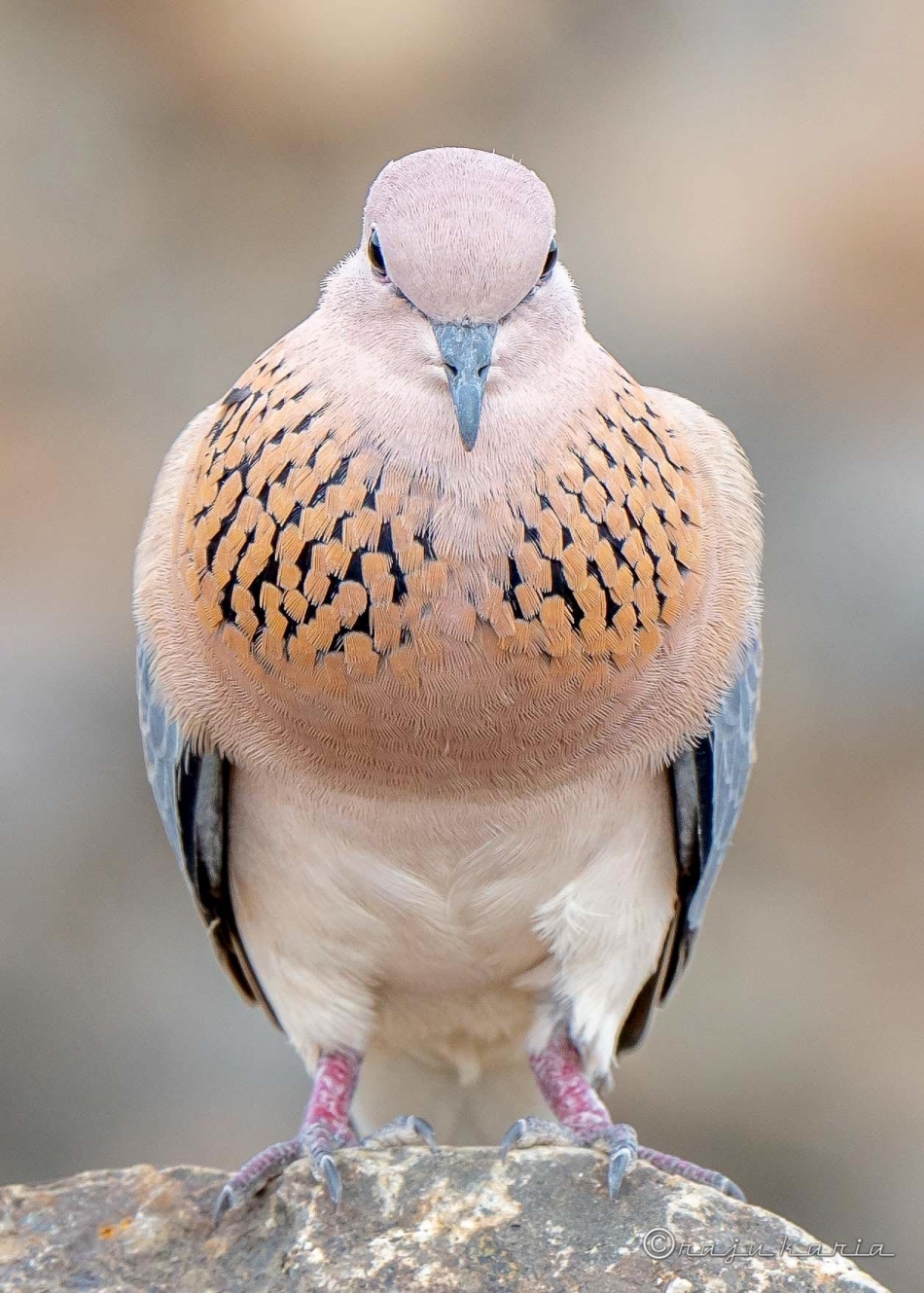
Laughing Dove (Spilopelia senegalensis): The laughing dove (Spilopelia senegalensis) is a small pigeon that is a resident breeder in Africa, the Middle East, South Asia, and Western Australia where it has established itself in the wild around Perth and Fremantle. This small long-tailed dove is found in dry scrub and semi-desert habitats where pairs can often be seen feeding on the ground. A rufous and black chequered necklace gives it a distinctive pattern and is also easily distinguished from other doves by its call. Other names include laughing turtle dove, palm dove and Senegal dove while in Asia the name of the little brown dove is often used. Image credit: Raju Karia
16 / 19

Chinspot Batis (Batis molitor): The chinspot batis (Batis molitor) is a small songbird of the genus Batis in the family Platysteiridae which is a common and widespread species in the woodlands of southern Africa from the Eastern Cape north to 3°N in southern Kenya and Gabon. It forms a superspecies with other rather similar members of the genus Batis. The chinspot batis is a rather stout bird 12–13 cm (4.7–5.1 in) in length. It has a black mask on its face, with a short white eyestripe, a grey cap and a white throat. The upperparts are grey with a prominent white wingstripe. The eyes are yellow while the legs and bill are black. The underparts are white with a black breast band in the males, the female has a chestnut breast band and a chestnut spot on the throat. Young birds are similar to females but the breast band and spot on the throat are tawny. Image credit: Tristan Masterton
17 / 19
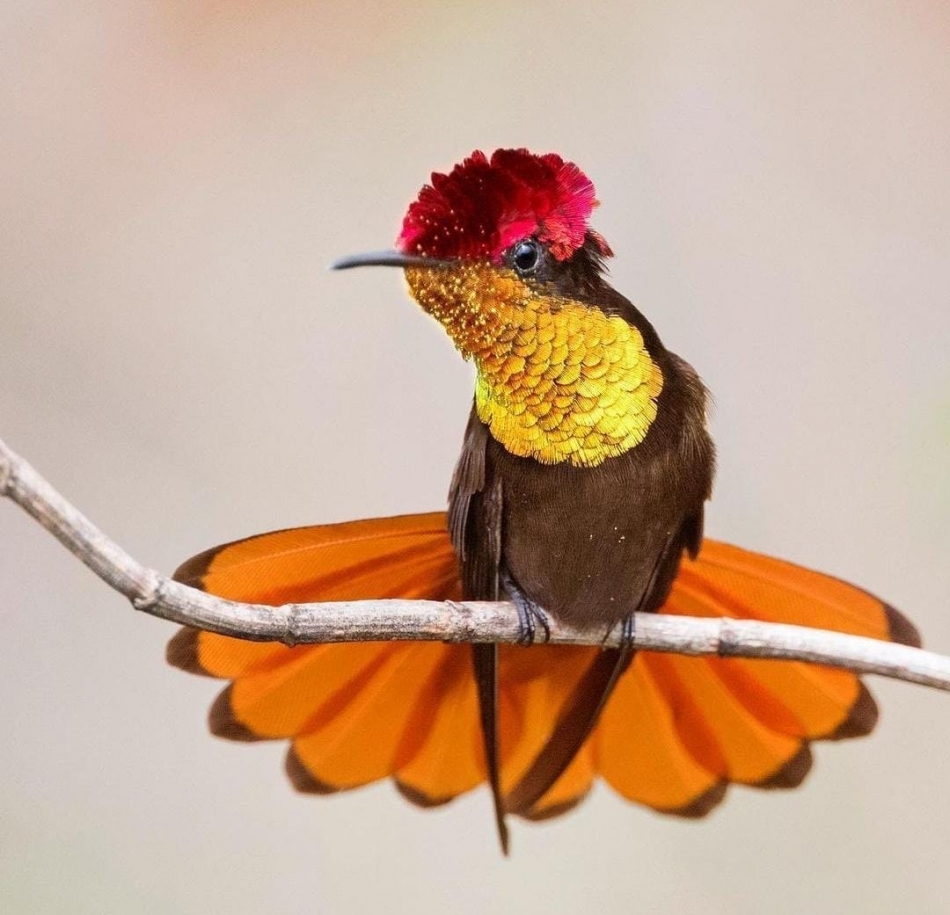
Ruby-topaz Hummingbird (Chrysolampis mosquitus) : The ruby-topaz hummingbird (Chrysolampis mosquitus), commonly referred to simply as the ruby topaz, is a species of hummingbird in the subfamily Polytminae, the mangoes. It is found in Aruba, Bolivia, Bonaire, Brazil, Colombia, Curaçao, French Guiana, Guyana, Panama, Suriname, Trinidad and Tobago, and Venezuela. The ruby-topaz hummingbird is 8 to 9.5 cm (3.1 to 3.7 in) long and weighs 2.5 to 5 g (0.09 to 0.18 oz). Its almost straight, black bill is relatively short compared to those of most other hummingbirds. The male has dark brown upperparts with an olive gloss. Its crown and nape are glossy ruby red, and the throat and breast are usually iridescent golden though sometimes emerald green. The rest of the underparts are brown and the chestnut tail is tipped black. The ruby-topaz hummingbird inhabits the interior and edges of open savanna-like landscapes and shrubby arid hillsides; it is found in gardens and cultivated areas as well. It mostly occurs below 500 m (1,600 ft) of elevation but is found as high as 1,700 m (5,600 ft). The IUCN has assessed the ruby-topaz hummingbird as being of Least Concern, though its population size and trend are unknown.[1] It is a “[c]ommon resident in the lowlands and coastal ranges” and “readily accepts man-made habitats.
18 / 19
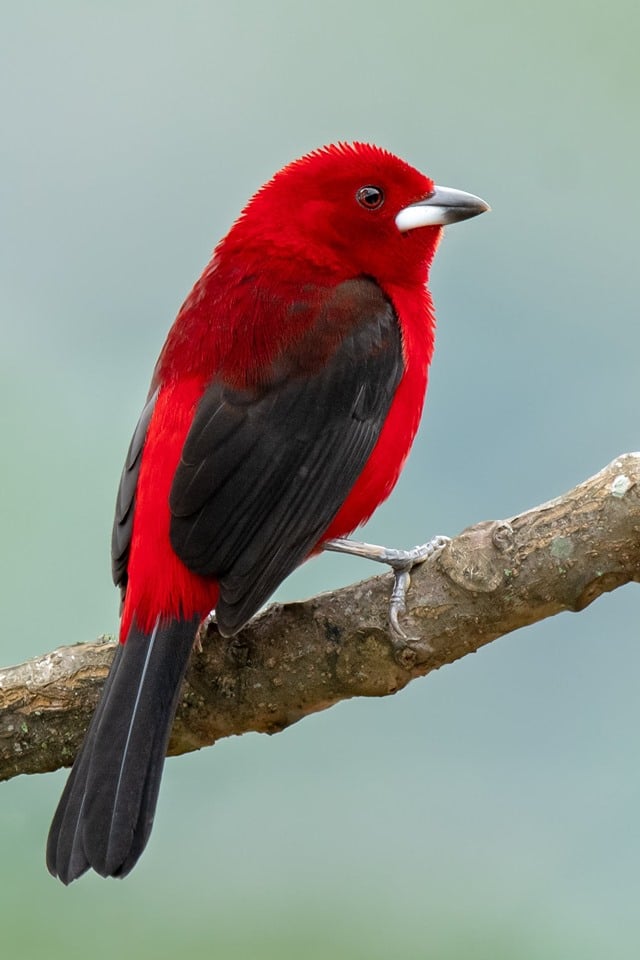
Brazilian Tanager (Ramphocelus bresilius): The Brazilian tanager (Ramphocelus bresilius) is a species of bird in the family Thraupidae. It is endemic to eastern Brazil and far northeastern Argentina, occurring in the coastal region from Paraíba and southwards to Santa Catarina and Misiones. The Swedish naturalist Carl Linnaeus described the Brazilian tanager in 1766 in the twelfth edition of his Systema Naturae. He coined the binomial name Tanagra bresilia.[2] It is now placed in the genus Ramphocelus which was introduced by the French zoologist Anselme Gaëtan Desmarest in 1805. The Brazilian tanager is a typical member of the family, with a heavy bill and sexually dimorphic plumage. It is 18 cm (7.1 in) long and weighs 28–35.5 g (0.99–1.25 oz). The plumage of the male is bright red with black wings and a black tail. The bill is black above and pale below. The female is mostly grey-brown with a brown-red belly and breast.
19 / 19
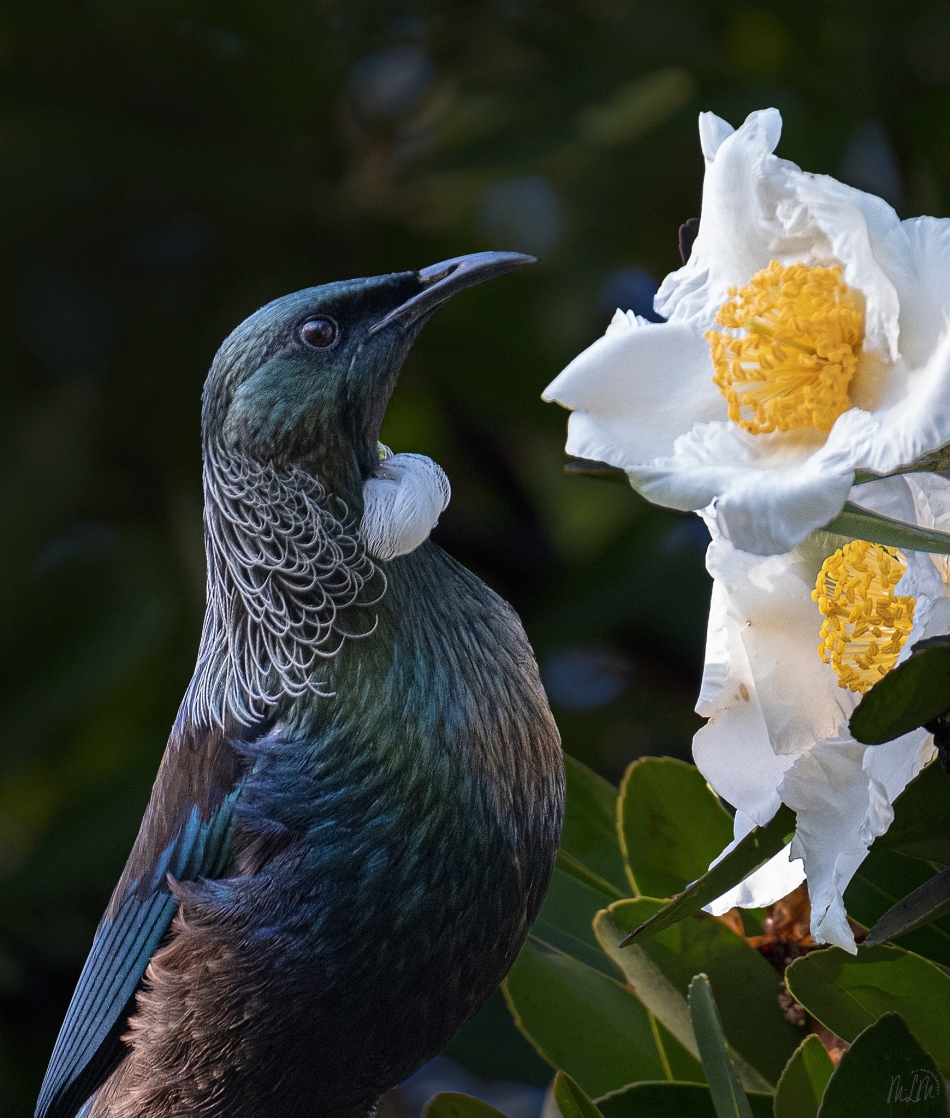
Tui (Prosthemadera novaeseelandiae): The tūī is a boisterous medium-sized bird native to New Zealand. It is blue, green, and bronze colored with a distinctive white throat tuft. It is an endemic passerine bird of New Zealand, and the only species in the genus Prosthemadera. It is one of the largest species in the diverse Australasian honeyeater family Meliphagidae, and one of two living species of that family found in New Zealand, the other being the New Zealand bellbird. The tūī has a wide distribution in the archipelago, ranging from the subtropical Kermadec Islands to the sub-Antarctic Auckland Islands, as well as the main islands.
Image credit: Marie-Louise Myburgh
